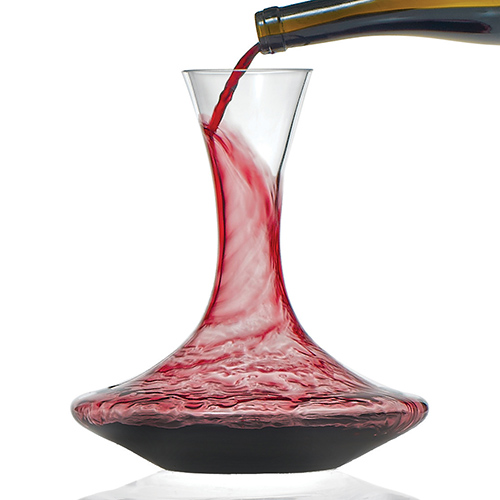
Purely in the interest of research, you understand, we pulled a Super Tuscan from the cellar to pair with a thick, juicy steak. What better way to kick off a discussion of wine pairing? And you just know this will have a happy ending.
- Where we're headed with this is instead of trying to pick the “right” wine for a dish (hint: there's no real "right" wine for any dish) let's talk about developing a pairing strategy. First, think about what drives the dish that you’re trying to pair – often it’s the sauce rather than the protein. Then consider the several wine elements discussed below to determine what wines you want to avoid and what would work well.
- If you want to take a deep dive into this subject, I recommend Master Sommelier Evan Goldstein's book Perfect Pairings. (It fits nicely under a Christmas tree for your favorite oenophile.)
We discussed the importance of acid in wine in our Dare to Pair post, and here's four other wine elements to consider in developing your pairing strategy:
- Alcohol. Very simply, the higher the alcohol the fewer your pairing choices. High alcohol means a full-bodied wine, and that can overpower lighter dishes. That 15 percent alcohol Napa Cab is great with a grilled meat but would be a train wreck with a light dish, such as fish. Try to match the weight of the wine and the weight of the food, such as a Pinot Noir with a chicken or pork dish.
- Beware, alcohol makes spicy hot dishes seem even hotter. A jalapeno dish and a high alcohol wine – heartburn city.
- Putting salt on your food makes the alcohol level of a wine seem even higher.
- Tannins. High tannin wines, such as Tannat, Cabernet, and Nebbiolo, can limit your pairing choices. Tannins impart a bitter taste and can have a rough texture that does not go well with subtle foods. In contrast, bitter foods (grilled, charred, blackened) work well with tannic wines.
- Tannins love fat and protein - thus the classic match of a Napa Cab or Bordeaux with a thick, juicy steak. But they do not pair well with fish – they impart a metallic taste.
- Oak. Wines with light or no oak are more flexible in pairing. Oak imparts a tannic bitterness that can overpower lighter dishes. So, play against this when pairing: beef and game, sure. Lightly oaked Chardonnay with a cream sauce – yep. Fish and lighter dishes, easy on the oak
- Sweetness. Many people dislike sweetness in a wine, but sometimes it’s a good thing. If you’re having a spicy hot dish, like many Asian dishes, try an off-dry wine such as a German Riesling. The sweetness tames the heat and fades into the background. Sweet is also a great contrast with salt: Roquefort cheese and Sauternes – I’m in.
- A key paring rule for desserts: the sweetness of the wine should be greater than the sweetness of the food. A classic train wreck is brut champagne and wedding cake – the sweetness of the cake makes even the most expensive champagne seem sour.
On to the lab session. We paired our filet with a 2017 Antinori Solaia ($150 retail). This “Super Tuscan” wine comes from one of the finest vineyards in the Chianti Classico region, and it’s only made in exceptional vintages. It’s a dry, full-bodied blend of Sangiovese, Cabernet Sauvignon, and Cabernet Franc. Solaia is aged for 18 months in new French oak barrels. We decanted this wine for an hour to give it a chance to open up, and the wine lived up to its stellar reputation.
- We paired this wine with a medium-rare filet mignon and it was a home run. The richness and the silky tannins of the wine were a spectacular match for the grilled filet. The wine had a marvelous complexity and balance, with nice notes of blackberry and black currant, along with pepper and cocoa. It had a tantalizingly long finish that unfolded slowly and only gradually faded.
- We gave this pair the grade of “Wow.” Either the wine or the filet would have been good by themselves; together they were magic.
This will be our last blog of the year - Happy Holidays everyone!
